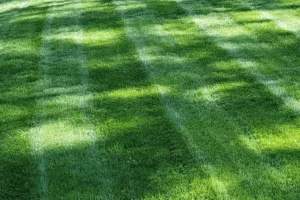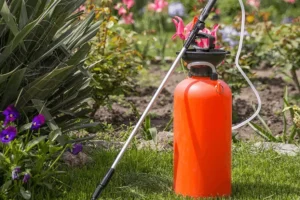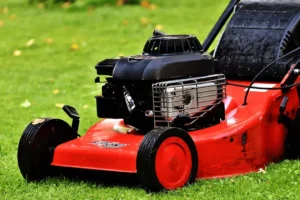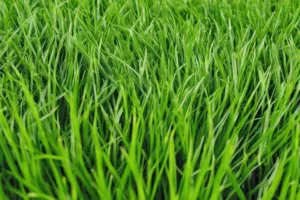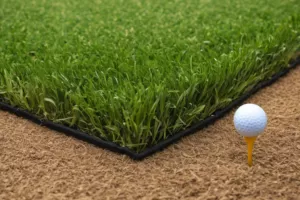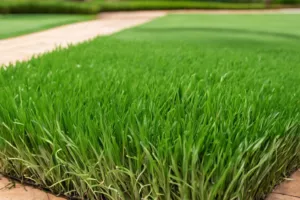
Setting the Stage
The Evolution of Lawn Care
Gardening has always been a blend of art and science. In the past, they were maintaining a pristine lawn meant hours of manual labor, sweat, and dedication. Gardeners would be out with their tools, meticulously ensuring every patch of grass was even and healthy. It was a labor of love, with every gardener having their secrets and techniques to achieve that perfect green.
Fast forward to today, and the gardening world has seen a technological revolution. While love and passion remain unchanged, modern tools have made the process more efficient. Mowers have evolved, irrigation systems have become more competent, and now, robots are entering the scene, promising to redefine lawn care.
Why Every Blade of Grass Matters to the Modern Gardener
For a gardener, every blade of grass tells a story. It’s not just about aesthetics; it’s about the health of the lawn, the soil beneath, and the ecosystem it supports. A well-maintained lawn can be a haven for beneficial insects, a place for birds to forage, and a source of pride for the homeowner.
But with the hustle and bustle of modern life, finding the time to care for every blade can be challenging. This is where technology comes in. The promise of robotic mowers is not just about convenience; it’s about ensuring every blade of grass gets the attention it deserves consistently and efficiently. This could be the perfect blend of tradition and innovation for the modern gardener.
The Big Question
Can a Lawn Mower Robot Truly Match the Finesse of a Seasoned Gardener?
Every gardener knows that there’s a sure touch, a feel, that comes with experience. It’s the ability to look at a lawn and know its needs or to feel the soil and understand its mood. It’s an art honed over years of being in tune with nature. So, when we talk about robotic mowers taking over this task, it’s only natural to wonder: can a machine truly replicate this human touch?
The world of technology has seen leaps and bounds in recent years. Robots can now paint, cook, and even dance! But mowing a lawn isn’t just about cutting grass. It’s about understanding the terrain, the weather, and the unique needs of each patch of green. This study aims to determine if our robotic friends are up to the task. Can they mow with the same care and precision as a human? Or are there nuances that only a seasoned gardener can understand?
Unveiling the Study’s Mission
The mission is simple: to put robotic mowers to the test on the lush lawns of St. Augustinegrass. This isn’t just grass; it’s a popular choice for many homeowners, known for its beautiful green hue and resilience. The challenge? To see if robotic mowers can maintain this grass as well as traditional methods.
To make it a fair fight, the study has set specific parameters. It’s not just about the lawn’s appearance but also its health, growth rate, and overall quality. By comparing the results of robotic mowing with conventional methods, the study aims to answer the big question: in the world of lawn care, can technology truly match tradition?
The Green Battlefield
The Sunny Lawns of Florida: Where the Mowing Duel Took Place
With its warm sunshine and occasional showers, Florida is a paradise for grass. Its lawns are the envy of many, with St. Augustine grass famous for its lush green appearance and hardy nature. It’s in this setting that our mowing showdown takes place. Think of it as the ultimate arena where man, machine, and nature unite in a dance of blades and greenery.
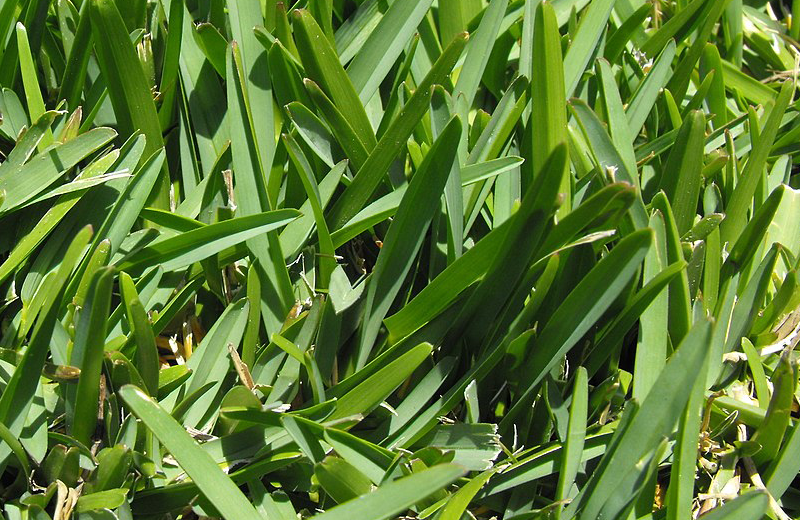
For our gardeners and landscapers, Florida’s lawns are familiar territory. They’ve seen the grass thrive in the summer sun and recover from the occasional frost. It’s a place where experience counts, and every gardener has their own set of tricks to make the grass greener on their side. Our robotic and traditional mowers will prove their worth in this sunny state.
The Contenders: Introducing Our Robotic and Traditional Mowers
In one corner, we have the modern marvel – the robotic mower. Sleek, automated, and packed with sensors, it promises to glide over the lawn, making precise cuts and quickly navigating obstacles. It embodies modern technology designed to make lawn care effortless and efficient.
In the opposite corner stands the traditional mower, a trusted companion for many gardeners. It’s been part of countless sunny mornings and has seen its fair share of lawns. Powered by human touch and guided by experience, it represents the tested lawn care methods. As the two contenders face off, the question remains: can the new kid on the block truly match the expertise of the seasoned veteran?
Scoreboard: Results from the Turf
Monthly Showdowns: How Each Mower Fared Across Seasons
Every gardener knows that lawns have their moods. They flourish in some months; in others, they need more TLC (Tender Loving Care). In our mowing face-off, each month was like a new round, with both our robotic and traditional mowers trying to prove their mettle. It wasn’t just about who cut the grass better; it was about understanding and adapting to the lawn’s needs.
As the months rolled by, patterns began to emerge. Some months saw the robotic mower gliding effortlessly, making precise cuts and leaving behind a carpet of green. In others, the traditional mower, with its human touch, seemed to have the upper hand, understanding the subtle nuances of the lawn. The scoreboard constantly changed, bringing challenges and surprises each month.
The Green Meter: Analyzing the Lushness and Health of the Grass
A lawn’s beauty isn’t just skin deep. It’s about how it looks on the surface and its overall health and vitality. Our mowing duel wasn’t just a surface-level contest; it delved deep into the grass’s health, measuring its lushness, color, and overall vitality. Think of it as a health check-up for your lawn.
The results were eye-opening. While both mowers had moments of glory, there were apparent differences in how the grass responded to each. The robotic mower, with its consistent cuts, ensured uniform growth. The traditional mower, on the other hand, brought the expertise of years, understanding when to cut and when to let the grass breathe. The green meter was a testament to their efforts, showcasing the health and beauty of the St. Augustinegrass under their care.
The Verdict
Robotic vs. Traditional: Which Mower Claimed Victory on St. Augustinegrass?
The moment of truth! After months of mowing, observing, and analyzing, it was time to see which mower stood out. The traditional mower is like an old, reliable, and trusted friend for many gardeners. It’s been there through thick and thin, understanding the quirks of each lawn. On the other hand, the robotic mower is the new kid on the block, promising efficiency, consistency, and a touch of modernity.
As the results rolled in, it was clear that both mowers had their strengths. The robotic mower ensured a consistent cut every time with its sensors and automation. It was like having a lawn on cruise control. The traditional mower, guided by the hands of an experienced gardener, brought in the art of mowing, understanding the subtle needs of the St. Augustinegrass. So, who won? Well, it wasn’t as clear-cut as one might think. Both mowers had moments of glory, and the choice may be personal preference.
What This Means for the Future of Gardening and Landscaping
The mowing showdown wasn’t just a contest but a glimpse into the future of gardening and landscaping. With technology advancing rapidly, the tools and methods we use in our gardens will evolve. But does this mean the end of traditional methods? Not necessarily.
The study showed that while technology can bring efficiency and precision, gardening still has a place for the human touch. The expertise, understanding, and love a gardener brings to their lawn are irreplaceable. Robotic mowers might become more common, but they’ll likely work hand in hand with gardeners, combining the best of both worlds. The future of gardening looks green, with a blend of tradition and innovation.
Digging Deeper
Further Reading for the Curious Gardener
Every gardener knows that there’s always more to learn. Whether it’s a new planting technique, a recently discovered fertilizer, or the latest lawn care technology, the gardening world is vast and ever-evolving. This mowing showdown between the robotic and traditional mowers is just the tip of the iceberg. There’s a wealth of knowledge out there waiting to be discovered.
For those with a thirst for knowledge, there are numerous resources available. From books penned by lawn care experts to online forums where gardeners worldwide share their tips and tricks, the learning never stops. Delving into these resources can provide insights into mowing and gardening. After all, a well-informed gardener is a successful gardener.
The Journey Beyond the Lawn
While our focus has been on the St. Augustine grass and the mowers that care for it, the gardening world is so much more. Beyond the lawn lies a universe of plants, flowers, shrubs, and trees, each with its own story and care routine. And just like with lawns, there’s always something new on the horizon.
Exploring beyond the lawn can open up new avenues for gardeners. The journey is endless, whether trying out a new plant variety, experimenting with a different landscaping design, or simply enjoying the beauty of a blooming flower. And as technology continues to make inroads into gardening, who knows what exciting innovations await? One thing’s for sure: the future of gardening is as bright and vibrant as a well-tended garden in full bloom.
FAQ
What is the main focus of the study?
The study investigates the performance of an autonomous (robotic) mower compared to a conventional mower on St. Augustinegrass lawn quality.
How do autonomous mowers differ from traditional mowers?
Autonomous mowers typically use very small, two-edged, razor-type blades affixed to a spinning disk, while traditional mowers have larger blades. Additionally, autonomous mowers can run daily and memorize fixed obstacles, improving their mowing efficiency.
What benefits do autonomous mowers offer?
Autonomous mowers reduce labor, offer a convenient mowing schedule, and have a lower operator injury risk. They also provide environmental benefits by reducing gas emissions, dust production, and noise emissions.
How do autonomous mowers impact turfgrass quality?
The small cutting edge of the razor blades on autonomous mowers can improve the quality of the cut, decrease leaf yellowing (chlorosis), and reduce turfgrass stress from mowing.
How do autonomous mowers affect weed growth?
Autonomous mowers can reduce spontaneous weed cover compared to conventional mowers due to increased shoot density. However, creeping weeds can adapt to constant mowing and grow below the mowing height if not controlled.
What were the mowing settings for the autonomous mower in the study?
The autonomous mower was set to mow daily between 9:00 AM and 3:00 PM with a fixed 2.5-inch height-of-cut.
How did the autonomous mower perform compared to the conventional mower?
The autonomous mower resulted in greater overall turfgrass quality during certain months and greater green cover during others compared to conventional mowing. It also produced greater turfgrass uniformity than conventional mowing.
What is the recommendation for mowing St. Augustinegrass?
St. Augustinegrass, common in the southeastern United States, is typically mowed at heights between 3-4 inches due to its coarse-textured leaf blades.

Bob Green, a passionate lawn care enthusiast with over two decades of landscaping experience, is this website’s proud owner. His vast knowledge of horticulture and dedication to helping homeowners maintain beautiful lawns are reflected in the valuable content he shares on his platform. John has always been interested in Agrostology.









